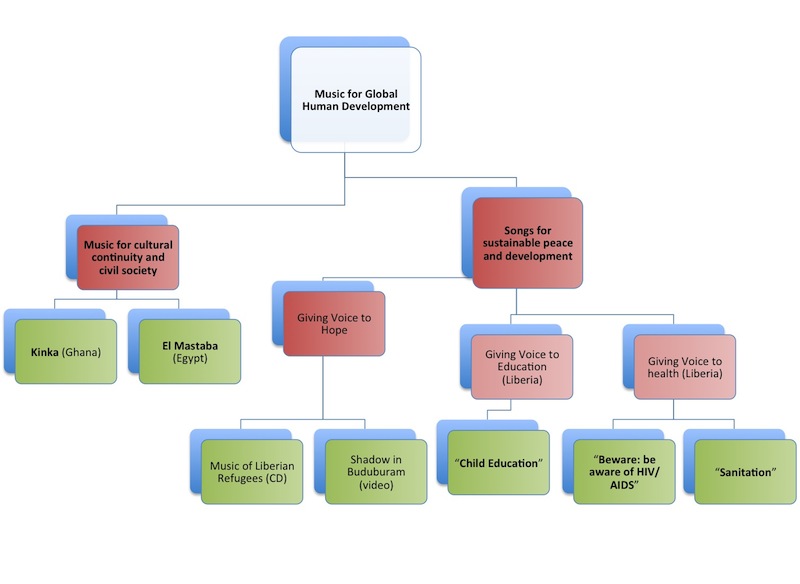Difference between revisions of "Music for Global Human Development"
| Line 2: | Line 2: | ||
'''http://m4ghd.org''' | '''http://m4ghd.org''' | ||
| − | |||
| + | This project, M4GHD, encompasses participatory action research projects in music & development, centered on collaborations between academics, NGOs, government organizations, musicians, and others, applying ethnomusicology to real-world social issues, focusing peoples who have been marginalized--socially, politically, economically--by colonialism and its aftermath, whether in the "developing" world or not. | ||
| − | + | [[Image:m4ghd-jpg.jpg|right|border|Current m4ghd taxonomy]] | |
''M4GHD comprises two main directions:'' | ''M4GHD comprises two main directions:'' | ||
Revision as of 23:04, 7 April 2014
This project, M4GHD, encompasses participatory action research projects in music & development, centered on collaborations between academics, NGOs, government organizations, musicians, and others, applying ethnomusicology to real-world social issues, focusing peoples who have been marginalized--socially, politically, economically--by colonialism and its aftermath, whether in the "developing" world or not.
M4GHD comprises two main directions:
- Songs for sustainable peace and development: primarily via local mass-mediated popular music styles, to disseminate messages relevant to crucial development issues, especially public health, education, peace, tolerance, and constructive critique...and especially to the youth, while building a culture of music. This project focuses on social weft, the horizontal threads the bind society today. Subprojects include, for instance, "Giving Voice to Health"; see Sanitation.
- Music for cultural continuity and civil society: supporting participatory musical continuity (not stasis) for intergenerational connectivity over time--the social "warp"--and hence social solidarity in the present. Ironically one of the most powerful ways to support musical continuity is by injecting "traditional" music into the local media space, which otherwise tends to become filled with global popular music. Projects include partnerships with culture organizations in Egypt, Lebanon, and elsewhere. See for instance, in Ghana: Kinka: Songs from Avenorpedo
Please follow the above links to learn more...
Related items
Video as community activism in ethnomusicology
For more information contact us: info@m4ghd.org.
--Michael Frishkopf
